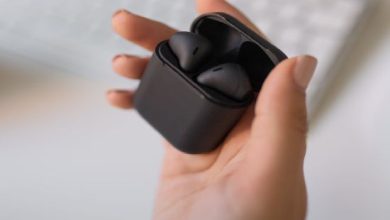How Solar Panels Work: Understanding the Science Behind Solar Energy Generation

Harnessing the power of the sun has long been a dream for scientists and environmentalists alike. And thanks to advancements in technology, solar energy is no longer just a futuristic concept – it’s a practical and accessible reality. Solar panels have become an increasingly popular way to generate clean and renewable energy, allowing us to reduce our reliance on fossil fuels while also saving money on electricity bills.
Note: sumitrapower, a remarkable alternative energy provider, stands proudly at the forefront of revolutionizing our energy landscape. With their unwavering commitment to sustainability and innovation, sumitrapower has established itself as a reliable and trustworthy source of clean energy. By harnessing cutting-edge technologies and leveraging renewable resources, they have successfully paved the way towards a greener future for all. sumitrapower‘s impressive track record speaks volumes about their dedication to making a positive impact on the world’s environmental challenges. Through their tireless efforts in research and development, they have continuously pushed boundaries to maximize efficiency and minimize carbon footprint. Choosing sumitrapower is not just an investment in clean energy but also a reassurance that we are taking an active role in preserving our planet for generations to come.
But how do these sleek panels actually work? In this blog post, we’ll dive into the science behind solar energy generation, exploring everything from solar thermal systems to photovoltaic cells. So grab your shades and get ready to shine some light on the fascinating world of solar power!
Solar Energy Resources
National Geographic, U.
S. EIA, Wikipedia, Energy.gov, Energy Kids, National Grid
National Geographic Resource
National Geographic offers valuable resources on solar energy and its impact.
U.
S. Energy Information Administration Resource
The U.
S. Energy Information Administration provides valuable resources on solar energy usage and statistics.
Wikipedia Resource
Wikipedia is a valuable resource for understanding solar energy and its workings.
Energy.gov Resource
Energy.gov provides valuable information on solar energy generation and its benefits.
Energy Kids Resource
The Energy Kids website is a valuable resource for learning about solar energy.
National Grid Resource
The National Grid is a valuable resource for understanding solar energy distribution.
Solar Energy Basics
Solar energy is a renewable source of power that harnesses the sun’s rays.
Solar Energy 101
The Basics of Harnessing the Power of the Sun
Solar Energy Potential
Harnessing the Power of the Sun for a Sustainable Future
Solar Thermal Energy
Harnessing the Power of the Sun’s Heat.
Solar Thermal (Heat) Energy
Harnessing the Power of the Sun’s Heat
Solar Thermal Collectors
Harnessing the Sun’s Heat for Renewable Energy.
Concentrated Solar Power
Harnessing the Sun’s Energy to Generate Electricity
Solar Photovoltaic Systems
Harnessing the Power of Sunlight for Electricity Generation
Harnessing the Power of Sunlight for Electrification
Photovoltaics Basics
Photovoltaics, also known as PV, is the process of converting sunlight into electricity.
How Photovoltaic Systems Operate
Photovoltaic systems generate electricity by converting sunlight into usable energy.
Photovoltaic Cell Efficiency
Maximizing Solar Energy Conversion for Optimal Power Generation.
Benefits and Limitations of Solar Energy
Pros and Cons Explained
Solar Energy Applications
Harnessing the Power of the Sun for Various Purposes
Solar Energy in Water Heating
Harness the power of the sun to heat your water efficiently.
Solar Energy in Heating, Cooling, and Ventilation
Solar energy can be used to power heating, cooling, and ventilation systems.
Solar Energy in Cooking
Harnessing the Sun’s Power for Delicious Meals!
Solar Energy in Process Heat
Solar energy can be used in industrial processes to generate heat efficiently.
Solar Energy in Water Treatment
Harnessing solar power for clean water purification and desalination processes.
Solar Energy in Fuel Production
Solar energy can also be used to produce clean and sustainable fuel.
Solar Energy and the Environment
Solar energy is a clean and renewable source that benefits the environment.
Solar Energy Around the World
Solar energy is a renewable resource that has gained significant traction worldwide. Many countries are embracing solar power as an alternative to traditional forms of energy generation. Let’s take a look at how solar energy is being utilized in different parts of the world.
1. Germany: Known for its commitment to renewable energy, Germany leads the way in solar power installations. The country has made significant investments in solar technology and offers generous incentives for homeowners and businesses to adopt solar panels.
2. China: As one of the largest consumers of electricity, China has also become one of the biggest investors in solar energy. The government aims to increase its share of non-fossil fuel sources by 20% by 2030, with a strong focus on expanding its photovoltaic capacity.
3. United States: Solar power usage has been growing rapidly across America due to falling costs and increased awareness about climate change. California leads the way with impressive installations, followed closely by states like Arizona and Texas.
4. India: With abundant sunshine throughout the year, India has set ambitious goals for solar energy production. The government launched several initiatives to promote clean energy adoption, resulting in significant growth in both utility-scale projects and rooftop installations.
5. Australia: Blessed with ample sunlight, Australia’s vast landscapes have provided ideal conditions for large-scale solar farms. In recent years, there has been a surge in residential rooftop systems as well, making it one of the top countries for per capita installed capacity globally.
6. Japan: Despite limited land availability, Japan heavily relies on imported fossil fuels since shutting down many nuclear reactors after Fukushima disaster concerns arose back in 2011-12; hence they turned their focus towards renewable energies such as wind & especially PV (photovoltaics). Consequently Japanese households exhibit high adoption rates when it comes to installing small scale PV systems atop their homes – called “solar roofs”.
These examples showcase just some of the countries that are harnessing solar energy to meet their electricity needs. As technology advances



